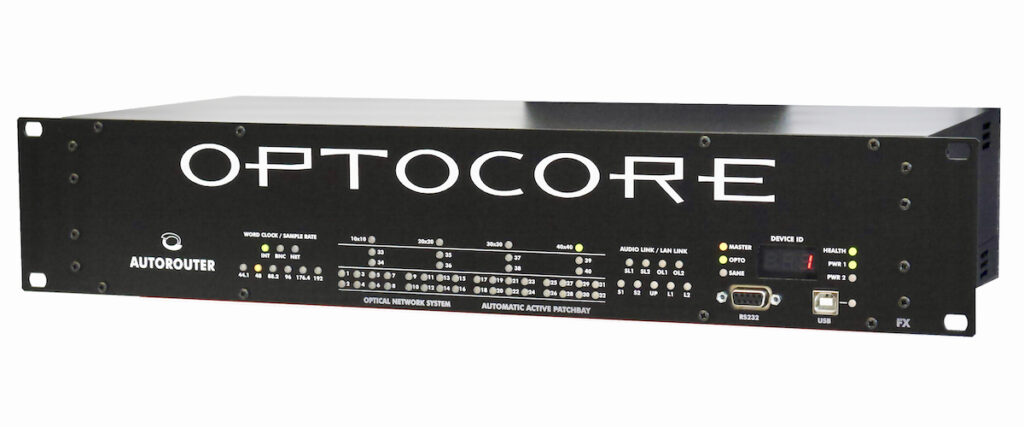OPTOCORE AUTOROUTER FORGES ITS OWN PATH OUT OF BROAMAN ROUTE66
By leveraging the advanced technology of the Route66 from its associate company, BroaMan, Optocore has not only been able to develop the AutoRouter intelligent patchbay—which offers similar functionality—but has been steadily exploiting the market segments in which the Optocore brand has greatest recognition.
“The Optocore AutoRouter automatically creates a redundant star out of ring topology, offering automatic routing of DiGiCo, Yamaha and Avid loops when thus connected,” stated Maciek Janiszewski, who serves as Technical Sales Manager for both companies. “It is the extremely close relationship that exists between Optocore and BroaMan—including a sharing of technical resources and expertise—that has enabled this to happen.”

So what differentiates the applications from the two fiber network giants? The Optocore AutoRouter is designed for audio systems, mainly in installation markets such as theatre, while BroaMan’s Route66 offers further options, such as video routing and software-based fiber stream routing, for wider broadcast and AV applications.
Compatible with stand-alone Optocore networks and DiGiCo fiber loops, with the same functionality also available for Yamaha TWINLANe cards and AVID AVB network cards, AutoRouter essentially closes the loop automatically between active devices and mobile stage boxes. There is no longer the need to patch cables manually, as the system is always redundant. And without the need for user interaction, this speeds up system layout and configuration for any production.
The device can be equipped with up to 40 duplex LC sockets allowing up to 20 different connections from different locations, devices or device groups.
By the time it was formally launched at this year’s Prolight+Sound Show the Optocore AutoRouter had already enjoyed a high-profile debut on the Coldplay tour. It has since featured in a slew of high-profile installations, including the Westfield Centre in London, Europe’s largest shopping mall, and Luzhniki Stadium in Moscow, redeveloped for the FIFA World Cup.